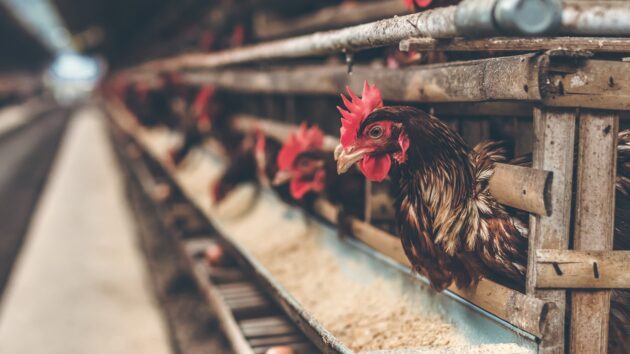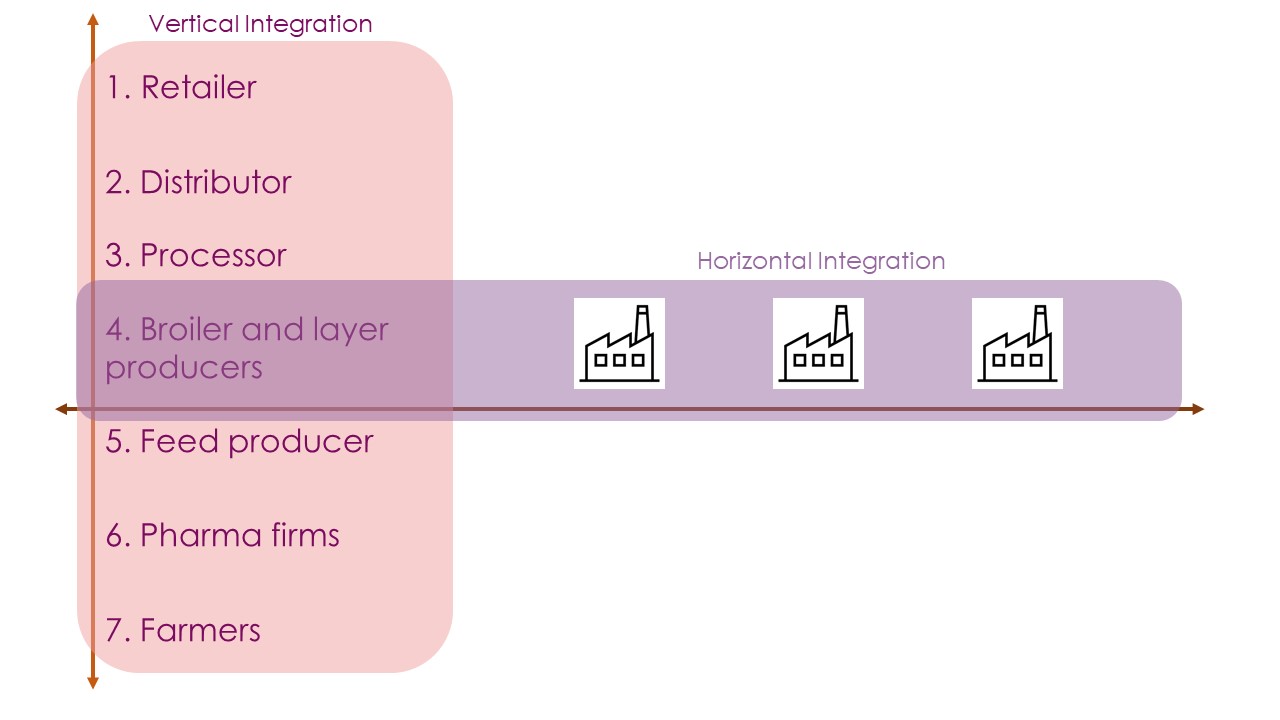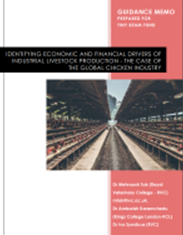
Mehroosh Tak
Applied economist
Royal Veterinary College
Advocates of safer, fairer farming practices are being primed for action by a guide that makes political economy research accessible to all. The guide provides frontline livestock workers, policymakers and others with the tools they need to campaign for better practices in food production systems.
Who controls poultry production matters. It has implications for health, equity and the environment.
Who controls poultry production especially matters in low- and middle-income countries (LMICs), where the poultry sectors are experiencing rapid growth and the role of animal-meat protein and eggs in people’s diets is recognised as important for healthy lives, especially to prevent malnutrition and stunting in children.
This is because concentration of the poultry industry can affect whether:
A clear understanding of the actors that control poultry production and the factors that enable their control is therefore critical for anybody interested in working towards healthier, fairer food systems.
Amid urbanisation, economic growth and changing diets in LMICs, industrialised and intensive poultry production systems have become the dominant form of meeting demand for chicken meat and eggs in these countries. This follows a path already taken in economically wealthier parts of the world.
For example, in India in just 30 years poultry production has moved from backyard farming systems, often run by women, to industrial enterprises where key aspects of the industry, from breeding genetics and hatcheries to feed mills and poultry distribution, are controlled – or ‘vertically integrated’ (see figure below) – by a small number of companies.

In addition to vertical integration of production processes, successful corporations may also expand power within the industry by increasing their market share – or ‘horizontally integrating’ – production. This can be concerning when one or two main players exist who are thus able to control the market, i.e., when oligopoly or monopoly situations exists.
Three researchers working for the One Health Poultry Hub successfully applied for a grant from the Tiny Beam Fund, a body which funds research into industrial animal food production so campaigners, researchers and policymakers can better understanding its negative impacts and find practical ways to address them. Their research investigated the political economy of global poultry genetics. It showed that rapid intensification of poultry develops as a consequence of an international financial system which favours industrial concentration, and national and international policy landscapes which reinforce this.
In India and Bangladesh, the research has evidenced intensification was hastened following the International Monetary Fund and World Bank’s structural adjustment programmes of the early 1990s which saw the reduction of import duties and restrictions on imports of poultry breeding stock. These policies led to a rapid growth of the broiler sector and a reliance on imported poultry.
A series of mergers and acquisitions of global poultry breeding companies has percolated to the Indian market, and now three main companies dominate in that country (Venkys, Srinivasa and Suguna), these being dependent on three international companies (Tyson, EWG and Hendrix).
Such concentration of the market – horizontal integration – requires critical research to understand how this setup affects food security, food safety, livelihoods and equity among the 50 million people for whom India’s poultry industry today provides direct and indirect employment.
In Bangladesh, the majority of the market is controlled by around six main domestic companies and reliant on imports from two international companies (Tyson and EWG). However, the Bangladeshi public sector and an unorganised private sector also supplies the market with domestically produced hybrid broiler birds. Thus, compared to India, the Bangladeshi poultry sector has less vertical and horizontal integration of its activities.
Current research being conducted by the Hub suggests, however, that multiple factors are driving further integration and industrialisation. These include the effects of the COVID-19 pandemic and high feed prices due to extreme weather events, Russia’s invasion of Ukraine, and a concurrent devaluation of the Bangladeshi taka.
Such concentration of control by the private sector and intensification of production makes public oversight and appropriate policy critical. This is because:
One Health Poultry Hub agribusiness researcher Dr Mehroosh Tak said: “While industrialised livestock production has increased the supply of animal-sourced foods globally, the system also brings about externalities that have repercussions for food safety, diets and malnutrition, livelihoods and the environment.”
A Guidance Memo has been produced to help campaigners, policymakers, researchers and those working in livestock sectors undertake their own investigations into corporate expansion and concentration. It enables non-experts to gain the skills and know-how to generate evidence about the linkages between global finance and industrialised farming systems and how they are structured and controlled.
The guide has been used by those fighting for better farming policy and practices to unpack the status of corporate concentration in different contexts. For example, the Stop Financing Factory Farming coalition used it to inform its strategy development and advocacy for development banks to stop investing in industrial animal agriculture, including at the World Bank Spring Meetings in April 2023. Faunalytics, a group which empowers animal advocates with access to research and data, has added the guide to its database of research resources..
Mehroosh Tak said: “The approach suggested in the Guidance Memo provides users with a mechanism to shift the food systems conversation beyond productivity growth to find ways to create a more just and fit-for-purpose food system – one which is both more sustainable and equitable in providing adequate nutrition for all while reducing the risk and burden of disease.”
TITLE Identifying economic and financial drivers of industrial livestock production – the case of the global chicken industry
AUTHORS Mehroosh Tak, Ambarish Karamchedu, Ivo Syndicus
PUBLISHER Tiny Beam Fund
 The Guidance Memo provides step-by-step guidelines on how to:
The Guidance Memo provides step-by-step guidelines on how to:

Applied economist
Royal Veterinary College
Veterinarian and PhD student
Royal Veterinary College